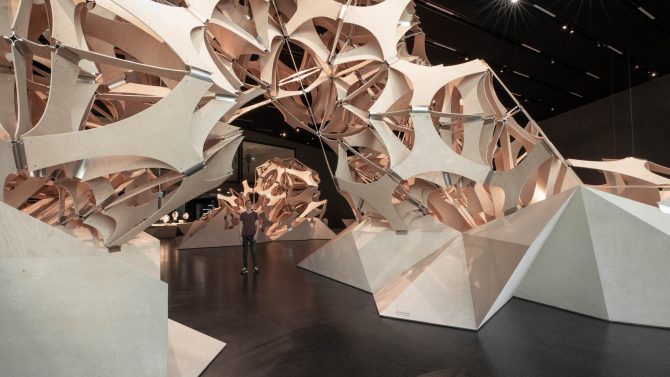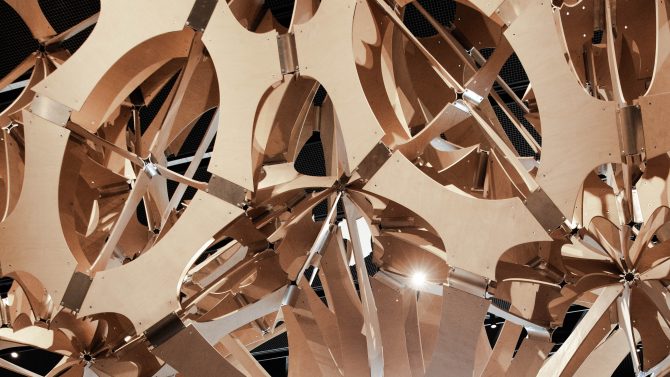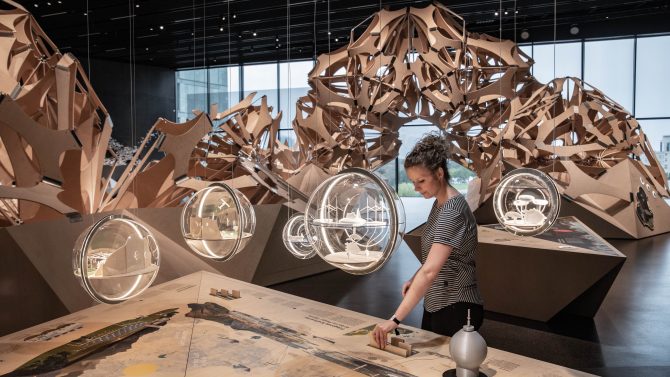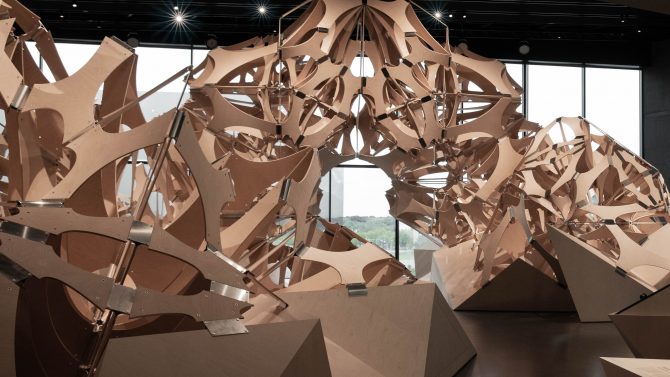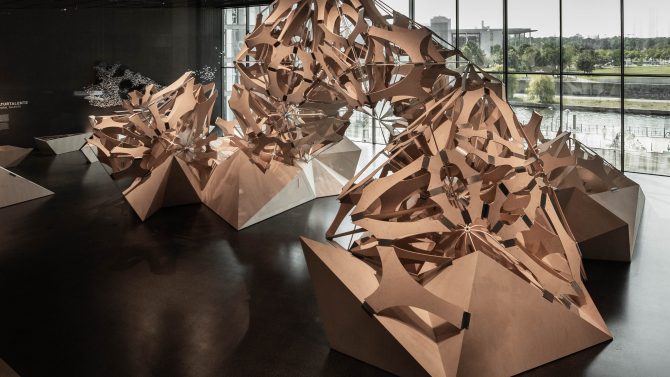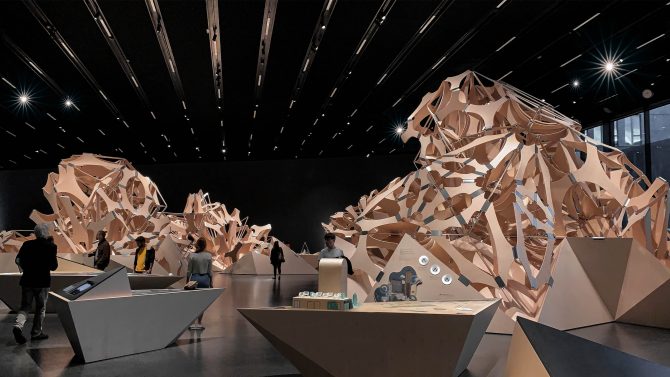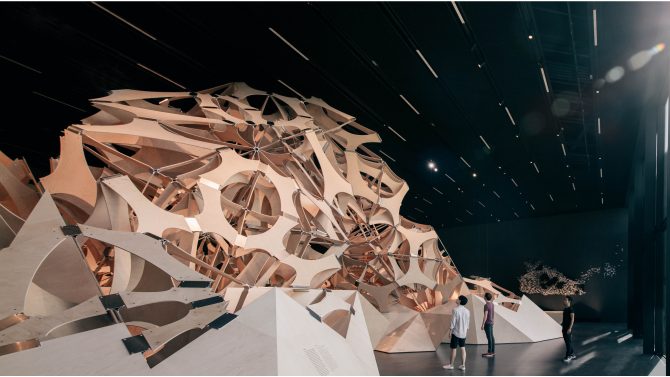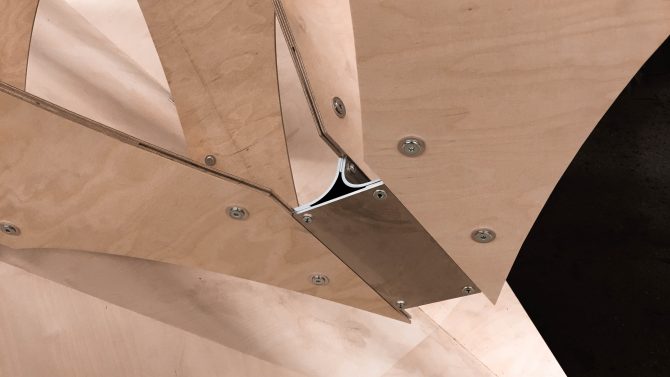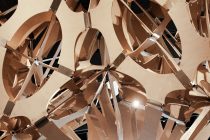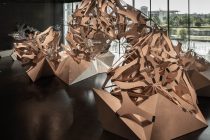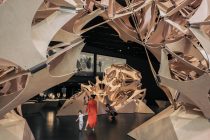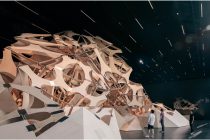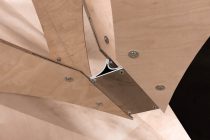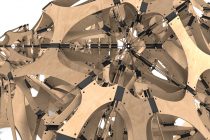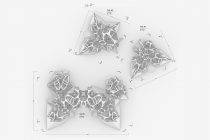Neo-Natur, 2019
Futurium, Berlin, Germany
At Futurium, an expansive, multi-part sculpture seems to grow organically out of the floor, twisting and climbing in all directions, cutting an eight-metre-high arc through the space.
The Neo-Natur sculpture symbolizes a new understanding of the natural world, taking into account humanity’s interventions in nature and technologization of natural processes, and at the same time recognising the inspiring and beneficial principles and systems in nature. Various displays surround Neo-Natur, presenting a variety of approaches to how we can find greater harmony with nature and learn more from the natural world.
In Neo-Natur, technology and nature meet. Its generative design is based on a mathematical principle known as Danzer tiling, which describes the aperiodic structure of quasicrystals. In quasicrystals, the golden ratio of nature, the mathematical constant tau, occurs repeatedly. Tau and the circle constant pi are both used in defining the golden ratio, which appears over and over again in natural structures such as plants. It also defines the floral pattern of Neo-Natur.
Using the Danzer tiling model as a basis, relatively few different modules can be used to computatively generate complex, organic-looking structures. 16 modules form the basis of fifteen hundred milled wood elements which were used to create Neo-Natur, and are held together with 4500 specially developed angle connectors. For the setup of the piece, an Augmented Reality app was programmed which rendered a 3D model of the complex sculpture visible in the exhibition space, using a HoloLens.
Design: ART+COM Studios and Schiel Projektgesellschaft mbH, Volker Zinssmeister, apfel,hübsch berlin
Planning, construction, production, setup: Art Department Studio Babelsberg
Engineering design, structural planning, production data, AR programming: ArtEngineering
Client: Futurium gGmbH

